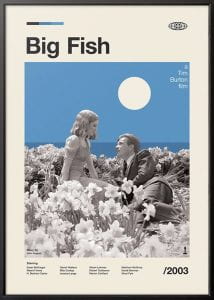My name is Elizabeth Clarke and I will be researching women in country music. I plan to utilize specific examples of female artists, such as Dolly Parton, to explain how popular stereotypes about the South are reinforced throughout the genre. I have grown up listening to country music, and have learned to appreciate it and the many great artists who have made contributions to the country music industry. It is important to me that female artists are recognized for the strides they have made, as well as for their notable achievements. I feel that my knowledge of country songs is pretty vast, but when it comes to the history of the genre, there is a lot for me to learn. I am interested in using my knowledge of songs and lyrics and applying it to what I have learned in Southern Studies class in order to display how southern stereotypes are confirmed and reinforced. In addition to using my previous knowledge, I will be using numerous resources and databases in order to ensure that I have adequate and reliable information to provide an engaging and insightful report to my reader.

My name is Mary Connolly and I will be examining the film, Gone with the Wind. I chose to research this film for my project because it is one of the most historically recognized movies to depict Southern culture during the period of the Civil War. Scarlett O’Hara’s character was widely embraced by many Southern women because the nature of her character is ironically the antithesis of a “Southern belle.” She is strong headed like her father and is not blind to the Confederacy and its men. Moreover, the film has received many accolades including eight academy awards and was a box-office winner for more than 30 years. I wanted to learn more about how the South was portrayed and observe women during the antebellum through a media form. It can be more engaging to learn about history and the conflict of the war in a visual form, rather than simply reading about it in an article or book. I also am looking forward to understanding the mannerisms, clothing style, and way the people from this time spoke. From my previous understanding of this movie, I knew that it takes place during the Civil War, which notably was one of the most potent times in American history. The film was created from the original publication of the novel, written by Margaret Mitchell in 1936. Through my viewing and analysis of the film, I will determine whether Scarlett O’Hara’s character represents the stereotypical Southern woman, or whether she would be considered a “bad-belle.”

My name is John Ducan and the artifact I chose to research was the film, “Big Fish” directed by Tim Burton based on the novel by Daniel Wallace. I chose to research this film as it was one I grew up with, it being a favorite of my parents, and a desire to learn more about the film from a Southern perspective. The film revolves around a man named Edward Bloom, on his deathbed, recounting crazy outlandish stories from his past to his son Will Bloom. The majority of the story happens in small towns and cities in Alabama. Not only is the location a very Southern one, but many of the themes explored in the movie are too. The central theme being storytelling and passing down of folk tales. Many of Edward Bloom’s stories either have mythological elements such as human giants in a circus or hard to believe circumstances such as single handedly infiltrating a North Korean camp and stealing information. These things fall in line with the popularity of folk tales in the South and the aspect of perhaps embellishing certain moments in recounting history that is sometimes associated with the South. As I mentioned earlier I had seen the film in the past but would like to revisit it to watch it as an older individual but also to re-examine the film from a cultural perspective.

The common thread between each of our group member’s artifacts is the emphasis of family in Southern culture. The concept of family is ingrained in every Southerner. The importance of family is universal but it maintains a special place in Southern culture. This is in part due to the South holding strong traditional values and views for a large duration of its history. In Dolly Parton’s song “Jolene,” Dolly sings about a woman named Jolene whose beauty is capable of stealing her husband away from her. Dolly begs Jolene to stay away, and states that “my happiness depends on you.” This song places importance on relationships as well as the dynamic that is popular in many southern households, including the belief that southern women must rely on men. Additionally, in the film Gone with the Wind, Scarlett O’Hara adopts the fierce and independent mindset of her father, while neglecting the stereotypical attributes of a Southern mother. Her relationship with her mother suffers because Scarlett does not mirror her mother’s innocent and femine demeanor. Lastly, in the film “Big Fish ”, the main character Will Bloom is attempting to rekindle a relationship with his father on his deathbed after falling out due to enduring his fathers outlandish tales all his life. He realizes during his father’s final days, how treasured his relationship with his father is and is finally at peace when he does pass away. While the relationships differ between each of our topics, all the topics highlight the importance the South places on familial bonds.






